Purinex - test PDF

| Title | Purinex - test |
|---|---|
| Author | For All Fakeness |
| Course | Analsis financiaro |
| Institution | Universidad UNIVER |
| Pages | 10 |
| File Size | 343.2 KB |
| File Type | |
| Total Downloads | 116 |
| Total Views | 137 |
Summary
test...
Description
CASE 52
PURINEX, INC. Teaching Note Objectives and Synopsis In June 2004, the chief financial officer (CFO) of a small Suggestions for pharmaceutical development company was considering the complementary cases about financial strategy needed to fund the firm’s growth until it could management of the firm’s secure a deal with a well-capitalized partner. The case presents equity: “Jetblue Airways IPO Valuation,” (UVA-F-1415) and three financing alternatives for the CFO: (1) Seek funding from a “Gainesboro Machine Tools venture capital firm, (2) initiate a round of financing from angel Corporation ” (UVA-F-1489) investors, or (3) wait until his company secures the deal with the “big pharma” partner. The case describes the terms for each financing alternative and the probabilities associated with securing the partnership deal. Also given are discussions of the pharmaceutical industry, the drug development process, and the access to capital for firms in this field. The tasks for the student are to interpret the probabilities, assess the implications of the alternatives, and recommend a financing strategy. This case can be taught as part of a stream of cases examining how firms raise equity. It offers opportunities to pursue the following specific objectives.
Developing an understanding of the pecking order of financing alternatives to determine a near-term financial policy for a firm. This exercise affords an opportunity to survey sources of equity in the life cycle of the young firm, beginning with founders’ capital, investment by angels, venture capital or private equity, and then an initial public offering (IPO).
Exercising decision-analysis skills using decision-tree techniques.
Understanding the consequences of multiple rounds of financing and the implications for dilution.
Assessing the value of the option to delay.
Examining the uncertainties surrounding multiple financing alternatives and the importance of deal structuring.
Suggested Questions for Advance Study
-21. What is Purinex’s business? How would you describe its strategy? What do you think are the founders’ goals and vision for the company? 2. What is the source of Purinex’s value? What are the firm’s technologies, and how successful could they be? What is the likelihood of that success? 3. What is the problem facing Purinex’s CFO Gilad Harpaz? What is the urgency associated with his concerns? 4. How do Purinex’s financing alternatives compare? How would you rank them as sources of cash in terms of their risk and potential return for Purinex? How feasible and/or attractive would it be to finance the firm’s growth with an angel round or a venture capital (VC) round? How do you assess the option to wait? 5. How would you structure the decision among these alternatives? Are there any qualitative considerations? How do you incorporate those into your analysis? 6. How would you choose to finance the firm’s growth? Prepare to explain the effect of your proposal on the firm’s growth, strategic direction, and dilution in the founders’ equity interest.
Supplementary Spreadsheet File There is a supplementary spreadsheet file to support instructor preparation, UVA-F1491TNX, containing a model of the decision alternatives presented in the case. Please do not share the instructor’s spreadsheet with students.
Hypothetical Teaching Plan The following is an outline for possible leadership of an 85-minute class discussion. The instructor could begin with a cold-call request for a recommendation from one student and then embark on the broader development of case issues as follows. 1. What is the problem facing Purinex, Inc.’s CFO Gilad Harpaz? What is the urgency? The CFO of Purinex must decide among three options to meet the near-term financing requirements for his company. The urgent need for capital derives from a dwindling cash supply that will be exhausted in less than 12 months. It is possible that the company will consummate a licensing deal with a well-capitalized pharmaceutical firm (big pharma), which would alleviate the cash crunch, but that deal remains uncertain. 2. What is Purinex’s business, and how would you describe its strategy? What do you think are its founders’ goals and vision for the company? The aim of this discussion is to identify Purinex as a small pharmaceutical firm whose founders and early investors seek an exit strategy through an initial public offering (IPO) or through the private sale of the company. Students will quickly see the distinction
between a high-growth firm such as enterprises.
-3this and large, traditional pharmaceutical
3. What is the source of Purinex’s value today? What are the firm’s technologies, and how successful could they be? What is the likelihood of success? Along with the preceding discussion, students can explore the source of value for the early-stage firm. In this case, the source of the company’s value is its intellectual property in the form of its patents on certain promising drug compounds. The company’s founders hope to capitalize on the value of that property in the short term through a licensing deal with a big pharma marketing partner. The likelihood of success depends on the probabilities of securing that partnership and the uncertainties surrounding the drug testing and approval process. 4. How do the financing alternatives compare? How would you rank them? What effect will these alternatives have on the existing investors’ interest in the firm? The case explicitly describes the relative preferences and constraints of each of the financing sources. In this stage of the discussion, the instructor might review the peckingorder concept. More generally, this is a problem of identifying a solution (or policy) that maximizes the founders’ wealth and growth of the firm while minimizing the dilution of control. 5. What do you recommend? What hard choices does your recommendation make about growth, wealth, and dilution? A few students may be asked to present their proposals for financing the firm. This sets the stage for the final discussion about recommendations, the value of the option to delay, and the nature of hidden costs (for example: control, jobs, negative covenants). The instructor could close the discussion with observations on the interdependence of financing and investment policy, the challenges of preparing the early-stage firm to go public, and the notion that not all capital is equal.
Case Analysis CFO’s problem and its urgency The challenge facing the CFO is to recommend a financing strategy that Discussion satisfies numerous criteria. Typical criteria for small, high-growth firms include question 1 maximizing shareholder wealth, maintaining current owners’ control and influence over the firm (i.e., avoiding voting and economic dilution), and providing capital for product research and development. It is also typical for small biotechnology firms to seek external financing that helps establish credibility value among the large pharmaceutical firms with which they hope to secure partnerships for one or more of their products.
-4The CFO’s urgency concerns the relatively short runway of cash—about elevenand-a-half months—available for the firm’s operations. See Exhibit TN1 for an illustration of this calculation. The instructor can elicit from students whether they perceive this amount as sufficient, given the needs of the firm. The case explains that Purinex’s cash constraint could be alleviated under the terms of a potential deal with a big pharma partner. Whether a deal could actually be consummated would remain unknown for another six months. Thus, the managers and owners of Purinex are under pressure to consider an appropriate strategy that would satisfy their near- and long-term financing needs. Business concept, strategy, and sources of value Discussion Purinex is a young, privately held, drug-development enterprise that hopes questions 2 to collaborate with a large, well-capitalized, pharmaceutical company with the and 3 resources to commercialize Purinex’s products. The firm’s value at the time of the case derives from its patents for purine-based compounds developed by its scientists. As the case explains, the two most promising commercial applications for these compounds are for the treatment of sepsis and diabetes. As the patent holders, the owners of Purinex hope to extract value from their intellectual property (i.e., the chemical designs for the purine compounds) by striking lucrative deals with one or more pharmaceutical marketers. The longer-term strategy for the firm’s founders is to prove the economic viability of the company and to secure investment returns either through an IPO or through the private sale of the company.
The potential success for Purinex’s compounds is captured in Table 1 of the case, which describes the likely terms of two deals for the company’s products: one for the treatment of sepsis and another for the treatment of diabetes. The instructor may take this opportunity to walk students through the combination of payments proposed in these deals. The footnote in the case explains that Harpaz’s initial practice was to assess partnership deal terms on an undiscounted basis. Thus, for the base case, students may simply combine the payments on an undiscounted basis and assume the payoff for each deal includes a royalty payment on a single year of sales for each drug (the case indicates that annual sales for the diabetes and sepsis drugs could be $4 billion and $500 million, respectively). The left-most panel of Exhibit TN1 illustrates this simplified approach. If time permits, more advanced students can be invited to calculate the present value of the combined deal payments. To derive discounted values, students can make assumptions about an appropriate hurdle rate and draw on case Exhibit 1 for insights about the likely timing of future milestone payments. The likelihood that Purinex would secure one of the two deals emerges in the probability estimates that Harpaz describes in the case. Before developing a graph of the probabilities, such as with a decision tree, the instructor can encourage the class to consider the nature of the uncertainties surrounding the likelihood of achieving the potential outcomes. The issues students describe may include the following:
Clinical testing: As described in the case and illustrated in case Exhibit 1, clinical testing for a drug in development is highly risky. Following lab and animal testing in the
-5preclinical phase, a drug’s development can stall during any of the three subsequent phases required by regulatory authorities in the United States.
Regulatory approvals: While it was likely that a drug, having passed phase III testing, would be approved by the U.S. Food and Drug Administration (FDA), there were still risks associated with securing final approvals.
Time to market: Typically, the time to take a drug from discovery and development to marketing approval was 10 to 15 years. As indicated above, however, such a timeframe could extend well beyond that, often depending on whether the drug required multiple attempts at clinical testing.
Identity of partner: For the developer of a drug, the commercial success of its product would depend (to a certain extent) on the skill and resources of its marketing partner.
Potential sales: An important component of a pharmaceutical deal was the royalty rate applied to total annual sales of the drug. Therefore, the value of the deal would be sensitive to estimates for unit sales and prices. In addition, the level of sales could be assumed to be stable through the product’s patent protection period, but there are always market risks associated with competitive technological developments.
The instructor can encapsulate this discussion by encouraging students to develop a decision tree model around the discrete probabilities provided in the case. Exhibit TN1 illustrates one approach to this modeling exercise. Evaluating the financing alternatives Having explored the nature and strategy of the business and the goals of the founders, students should be encouraged to scrutinize the possible sources of near-term financing for Purinex. A critical assessment would raise these observations.
Discussion question 4
Internal financing or additional capital from founders: Internal financing in the near-term is not an option for Purinex since the firm has no earnings. Likewise, though it is not explicit in the case, we may presume the founders have no more capital of their own to invest. Thus, if the CFO chooses not to seek external financing now, then his only alternative is to wait another six months until the outcome of a big pharma deal is known. The value of such a delay is the opportunity for Purinex’s current owners to retain complete control. However, this option also exposes Purinex to the risk of a subsequent “down round” (i.e., lower premoney valuation and less control) should both the sepsis and diabetes deals fail to materialize within six months.
Financing by angel investors: Angel investors are a source of relatively limited additional funds. However, as the case states, with a high premoney valuation, investment by them will not seriously dilute the founders’ voting interest. The angels, who are typically nonprofessional investors, would presumably be friendly to Purinex and, therefore, may be somewhat attractive to the founders from a control standpoint.
-6VC firm funding: Private-equity investors could be an important source of growth funds and could assist the firm in preparing to go public. However, given their relatively lower premoney valuation for Purinex, participation by these investors will unquestionably dilute the founders’ voting control of the firm. In seeking to maximize the return on their investment, these investors might intervene in the operations of the firm. This is not patient money. These investors will want to exit from their investment via an IPO in five to seven years. While this period is consistent with the founders’ aspirations, any delay in preparing the firm to go public will incur the wrath of the VC investors.
The foregoing discussion affords an opportunity to explore the concept of shareholder dilution. In its most common usage, dilution refers to a reduction in earnings per share following an equity issuance or stock-for-stock acquisition—this is accounting dilution, a change in reported results (without necessarily a reduction in economic value). Economic dilution is quite simply a reduction in shareholder wealth. Voting dilution is a reduction in voting power (i.e., the percentage of total votes held by the investor). The point of distinguishing among these is to suggest that the three dilutions do not necessarily move together. Policies may be adopted that dilute the founders’ voting power but accrete their wealth. Reviewing the financing sources in this manner essentially takes the students down the current pecking order of financing that prevails at Purinex. The existence of a pecking order should inform the students’ search for an appropriate financing strategy. Preparing a recommendation The decision-tree model presented in Exhibit TN1 provides a foundation for developing a point of view on the three financing alternatives for Purinex: Wait six months, seek angel investors, or pursue a round of funding from a venture capital firm. Several considerations will arise during this analysis.
Discussion question 5
Deal values: First, as discussed previously, the base-case analysis assumes undiscounted aggregate values for the sepsis and diabetes deals. The deal values presented in the table on the left side of Exhibit TN1 also assume a single royalty payment on one year of sales for each drug. Some students may question this approach and may wish to look at the deals as providing streams of payments over time and discount those streams accordingly. However, it would be sufficient here to assess the deal terms in an undiscounted fashion for simplicity and expositional clarity. Second, students should note that if Purinex chooses to seek VC funding now, then the terms of either drug deal would be improved by 10%. Likewise, if either of the two deals failed to occur within six months, there would be a high probability that Purinex would secure a secondary diabetes deal in a year that would be valued at half that of the earlier deal.
Ownership percentages: If Purinex chooses to pursue external funding, then the percentage of the company owned by the founders will vary depending on the premoney valuation and the amount of the new investment. For instance, if Purinex chooses an angel round of financing, the premoney valuation for the company would be $17.5
-7million and the angel investment would be $2 million. Thus, the percentage of the company remaining in the hands of the founders would be $17.5 million/($17.5 million + $2 million), or 89.7%. This percentage provides the basis for a weighted expected value (EV) for each financing alternative.
Runway implications: As described in the case, given the company’s current burn rate and remaining cash on hand, Purinex has a runway of 11.7 months. Each financing alternative, of course, has implications for this runway. With the angel round, Purinex would have another 3.75 years of operating capital. The VC option would afford the company another 15 years of spending at its current rate. This makes the simplistic assumption that any newly invested capital would not be deployed to new investments or further research and development. These observations should surface questions about how much financing Purinex needs. Some may argue that the higher capitalization is not worth sacrificing the founders’ proportion of equity, while others may assert that a well-capitalized firm has credibility value among potential big pharma partners. This raises an “eat well versus sleep well” paradox—Purinex can forgo external financing in the expectation that the payoff to the founders will be large and free from covenants or restrictions, or the company can offer portions of its equity to outsiders to ensure its near- to mid-term survival.
Each branch of the decision tree should result either in a payoff from a deal or in no deal. The branches of this tree may then be “folded back” to derive EV for each financing alternative. Each EV represents the sum of the means of each probability distribution illustrated in the decision tree. Exhibit TN1 provides a presentation of this technique. When calculating EVs for the VC and angel rounds, students should remember to subtract the amount of the external investment from the payoff to derive the final EV. As indicated above, the final EV for each financing alternative should also be weighted by the percentage of ownership remaining with Purinex’s founders to reflect the proportion of the expected outcome that would accrue to their remaining interest in the company. The resulting analysis should yield results similar to those presented in Exhibit TN1. Solely on an expected-value basis, the VC round is the least attractive option. The option to wait six months is significantly better, but the angel round is the superior alternative of the three proposed. Thus, for a purely EV player, the angel round is the way to go. However, the option to wait and the option to seek angel investors produces proximate EV results, and students should be encouraged to compare these options carefully.
-8As the case explains, if Purinex decides to wait six months and the big pharma deal fails to occur during that period, the company will be forced into a subsequent down round with a VC firm. With a dwindling cash supply, the company would be in a significantly weakened position with potential investors. Not only would the founders receive a s...
Similar Free PDFs

Purinex - test
- 10 Pages
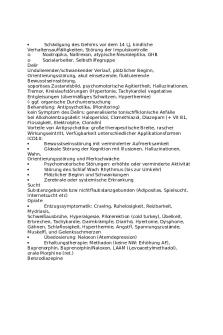
Test - test
- 1 Pages
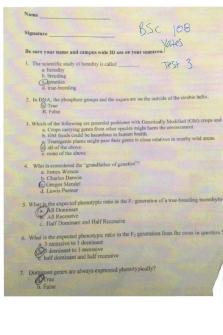
Yates Test 3 - Test
- 7 Pages
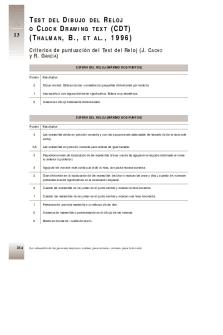
Test-reloj - test
- 4 Pages
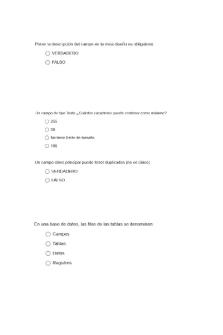
Test Access 2010 - Test
- 6 Pages
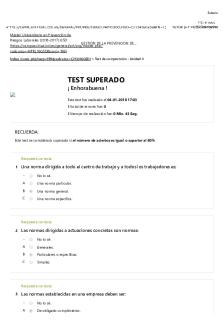
Resultado Test 842 - TEST
- 2 Pages
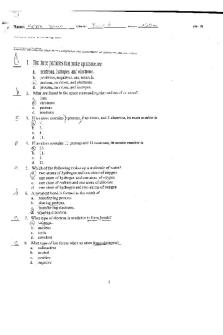
AP. Bio. Test - test
- 4 Pages
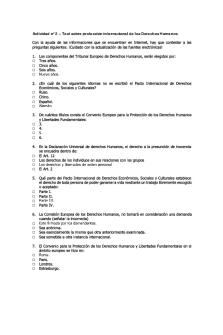
Test
- 4 Pages
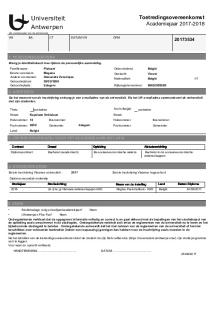
TEST
- 1 Pages

Chapter 4-test - test
- 23 Pages
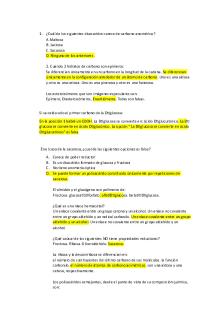
Test preguntas - test
- 4 Pages
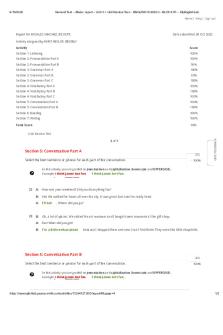
Test 3 - 5 - test
- 2 Pages

PET TEST Full Test
- 35 Pages

Preguntas TEST - CG - Test
- 4 Pages
Popular Institutions
- Tinajero National High School - Annex
- Politeknik Caltex Riau
- Yokohama City University
- SGT University
- University of Al-Qadisiyah
- Divine Word College of Vigan
- Techniek College Rotterdam
- Universidade de Santiago
- Universiti Teknologi MARA Cawangan Johor Kampus Pasir Gudang
- Poltekkes Kemenkes Yogyakarta
- Baguio City National High School
- Colegio san marcos
- preparatoria uno
- Centro de Bachillerato Tecnológico Industrial y de Servicios No. 107
- Dalian Maritime University
- Quang Trung Secondary School
- Colegio Tecnológico en Informática
- Corporación Regional de Educación Superior
- Grupo CEDVA
- Dar Al Uloom University
- Centro de Estudios Preuniversitarios de la Universidad Nacional de Ingeniería
- 上智大学
- Aakash International School, Nuna Majara
- San Felipe Neri Catholic School
- Kang Chiao International School - New Taipei City
- Misamis Occidental National High School
- Institución Educativa Escuela Normal Juan Ladrilleros
- Kolehiyo ng Pantukan
- Batanes State College
- Instituto Continental
- Sekolah Menengah Kejuruan Kesehatan Kaltara (Tarakan)
- Colegio de La Inmaculada Concepcion - Cebu

